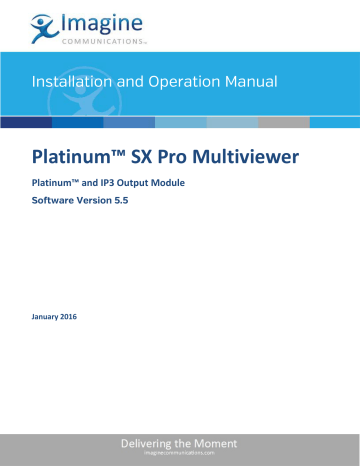

- #Keyboard shortcuts for ip multiviewer pro#
- #Keyboard shortcuts for ip multiviewer software#
- #Keyboard shortcuts for ip multiviewer Pc#
- #Keyboard shortcuts for ip multiviewer free#
JMultiViewer Free is a freeware intelligent multiviewer solution for video and audio preview and monitoring, which supports up to 4 monitoring channels. It lets you add multiple IP cameras and view respective RTSP streams. You first need to add a camera by setting up its configurations and then view RTSP stream. For this, it supports RTSP streaming protocol as well as HTTP and ONVIF protocols.
#Keyboard shortcuts for ip multiviewer software#
Perfect IP Camera Viewer is a free software to monitor IP cameras from your computer.
 All four Audio Outputs (Master, Headphones, A and B) can also be shared over the network. Audio Inputs such as from ASIO USB interfaces or Sound Cards can be shared over the network. Camera added to vMix using a Capture Card can be shared over the network.
All four Audio Outputs (Master, Headphones, A and B) can also be shared over the network. Audio Inputs such as from ASIO USB interfaces or Sound Cards can be shared over the network. Camera added to vMix using a Capture Card can be shared over the network. #Keyboard shortcuts for ip multiviewer pro#
In vMix 4K and Pro you also have the ability to send a second output through the use of External 2 feature to send an independent source such as Preview, Output, Input or MultiView. #Keyboard shortcuts for ip multiviewer Pc#
Share the Output of vMix, including audio to any NDI compatible device or PC on the network including another computer running vMix!. vMix also includes a free vMix Desktop Capture application that can share the desktop, including audio of any PC or Mac. vMix provides the same functionality for these inputs as it does for traditional HDMI and SDI Cameras sources including the ability to use them with transitions, streaming, recording, MultiCorder and even Instant Replay!. Receive multiple channels of video and audio from any NDI compatible device or PC on the network. Press the Alt + Shift + D (on Windows, Linux) or Command + D (on macOS) keys on your keyboard. To open a new pane in the command-line terminal: This resets the cursor to the beginning of the command prompt. Press the Control + U (on Windows, Linux, or macOS) keys on your keyboard. Press the Control + K (on Windows, Linux, or macOS) keys on your keyboard. To trim the text at the cursor prompt to the end of the cursor prompt: Remove characters from the cursor to the end of the prompt To delete one character before the cursor, press the Backspace (on Windows, Linux, or macOS) key on your keyboard. To delete the character at the cursor, press the Control + D (on Windows, Linux, or macOS) keys on your keyboard. To delete one character at a time in either direction: Press the Control + W (on Windows, Linux, or macOS) keys on your keyboard. To delete a word that precedes the cursor in the command prompt: To jump to the end of the command prompt, press the Control + Right Arrow (on Windows or Linux) or Command + Right Arrow (on macOS) keys on your keyboard and insert some text at the cursor.ĭelete one word at a time in the command prompt. To jump to the beginning of the command prompt, press the Control + Left Arrow (on Windows or Linux) or Command + Left Arrow keys (on macOS) on your keyboard and insert some text at the cursor. 
To move the cursor to the beginning or end of the command prompt: Jump to the beginning and end of the command prompt
 To shift the cursor to the right, either press Right Arrow or Control + F (on Windows, Linux, or macOS) keys on your keyboard. To shift the cursor to the left, either press Left Arrow or Control + B (on Windows, Linux, or macOS) keys on your keyboard. To move the cursor position left or right by one character: Press the Enter key on your keyboard to run the selected command. To navigate to the next command, use the Down Arrow (on Windows, Linux, or macOS) arrow key on your keyboard. To navigate to the previous command, use the Up Arrow (on Windows, Linux, or macOS) arrow key on your keyboard. To navigate through the command prompt history and fill the command prompt with the selected command:
To shift the cursor to the right, either press Right Arrow or Control + F (on Windows, Linux, or macOS) keys on your keyboard. To shift the cursor to the left, either press Left Arrow or Control + B (on Windows, Linux, or macOS) keys on your keyboard. To move the cursor position left or right by one character: Press the Enter key on your keyboard to run the selected command. To navigate to the next command, use the Down Arrow (on Windows, Linux, or macOS) arrow key on your keyboard. To navigate to the previous command, use the Up Arrow (on Windows, Linux, or macOS) arrow key on your keyboard. To navigate through the command prompt history and fill the command prompt with the selected command:








 0 kommentar(er)
0 kommentar(er)
